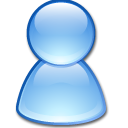Article,
Recognition Thresholds for Letters with Simulated Dioptric Blur
Optometry & Vision Science, (2000)
Abstract
colon; We examined the effects of simulated dioptric blur on the degradation of visual acuity using digitally filtered letters. Four types of digital filters were applied to 5 letters (C, D, E, O, and S), constructed to the specifications of Sloan optotypes. These filters were: (1) "normal," designed to simulate the positive and negative lobes of the modulation transfer function (MTF) produced by dioptric blur; (2) "truncated," which passed only those spatial frequencies up to the first zero of the MTF; (3) "phase-rectified," which inverted all of the negative lobes of the MTF to positive; and (4) "truncated-plus-negative," which eliminated all positive lobes above the first zero of the MTF. The letter size required to achieve 60\%-correct identification was determined for letters that were filtered to simulate +1, +2, and +4 D of blur. Letters subjected to normal, truncated, and truncated-plus-negative filtering had approximately the same acuity threshold, whereas the threshold size for phase-rectified letters was significantly better. Our interpretation of these results is that dioptric blur hinders letter recognition because useful spatial frequency information is limited to that below the first zero of the MTF, and not because of interference from the phase-reversed spatial frequency information above the first zero. Our letter identification thresholds are consistent with recent evidence that the critical information for letter acuity corresponds to approximately 1.5 cycles/letter. (C) 2000 American Academy of Optometry
